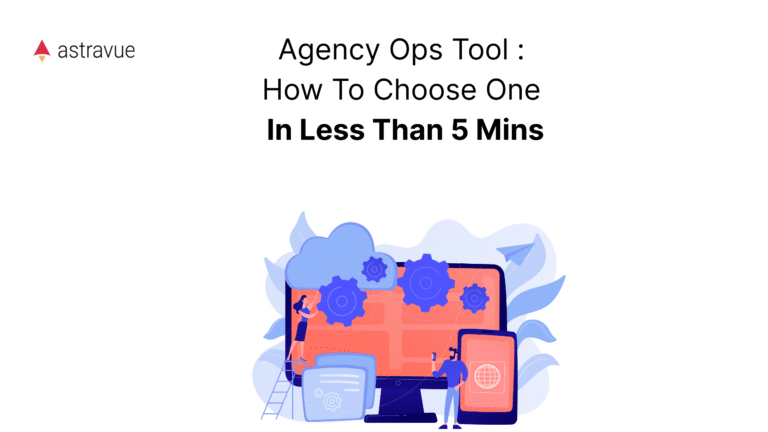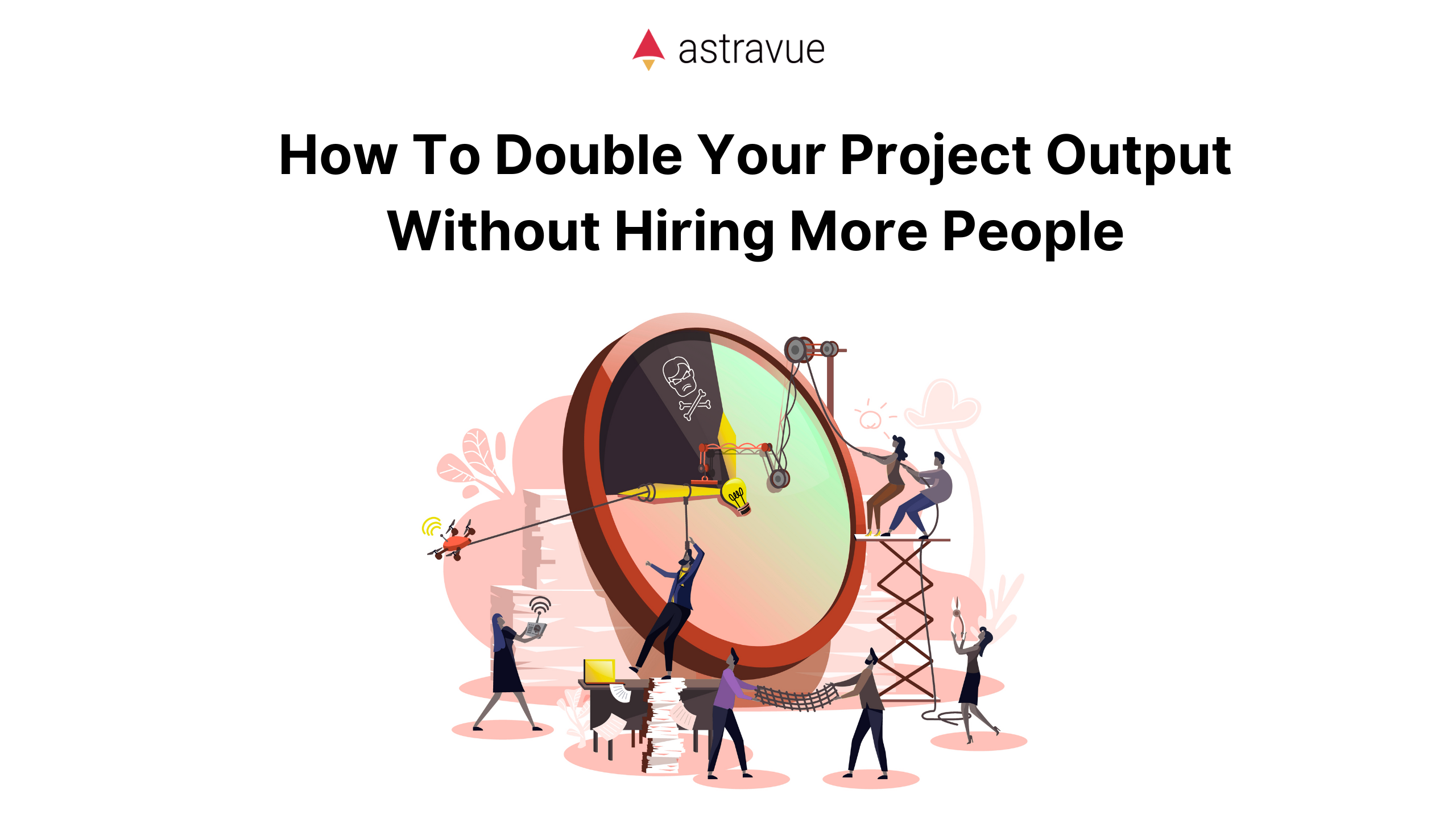
Read this is to see how to actively use your...

This guide is for agencies between 1-50 employees. If you’re running a larger agency, check out our PSA tool guide instead.
Most agency ops tools are still built like they’re meant for massive operations. And the “small business” versions are usually just the enterprise tool with fewer features and a lower price tag.
Meanwhile, you’re drowning in tool research, comparing feature lists, and watching demo videos for software you’ll probably never fully use.
You could be:
And you’re ALL dealing with the SAME problem.
You need the right tools to help you manage client projects so you can grow, but they’re all complex.
You don’t need enterprise-level PSA tools with 47 features and dedicated IT teams to manage them. (If you’re running a larger agency, check out our PSA tool guide instead.)
You need something that works today, not after three weeks of setup.
Most small agency owners spend weeks researching ops tools.
They create comparison spreadsheets with 20 different options.
They sit through countless demos where sales reps show them features they’ll never need.
They read reviews from agencies that are nothing like theirs.
Two months later, they’re still using the same combination of spreadsheets, email chains, and messages that were driving them crazy in the first place.
Happens because choosing feels overwhelming,
When every tool promises to solve every problem.
Here’s what actually matters when you’re running a small agency:
You should be able to sign up, add your current projects, and start using the tool within an hour.
No setup consultants. No onboarding calls. No configuration requirements.
If you need training to use your ops tool, it’s too complicated for a small agency.
You need to see what everyone’s working on without digging through menus.
Who’s working on what project? What’s due this week? Which projects are behind schedule?
This should be visible from your main dashboard, not buried in a report you have to generate.
Simple Time and Cost Tracking
You need to know if projects are making money while you can still do something about it.
Not advanced analytics that require a finance degree. Just simple profit/loss by project so you can spot problems early.
Easy Client Communication
Your clients want updates, not access to your internal chaos.
Simple dashboards and status reports. Easy file sharing. Clear timelines.
No client portals that require their own user manual.
Choosing The Right Tool In 5-Minutes
If you read this article about the most important number in business,
You’ll know it’s
SPEED.
Speed is THE MOST IMPORTANT number in business.
So, instead of wasting weeks comparing tools,
use this simple framework to choose in less than 5 minutes:
Step 1: List Your 3 Biggest Pain Points (1 minute)
What are the top 3 things that are actually broken in your agency right now?
Examples:
Don’t look at feature lists alone.
Look for tools that specifically mention solving your exact pain points.
If you keep quoting projects thinking you’ll make $3,000 but somehow end up breaking even (or worse, losing money), find tools that show you’re bleeding money while you can still do something about it.
If your team spends half their day asking “what am I supposed to be working on?” and the other half waiting for you to tell them what’s next,
look for tools where everyone can see their tasks without playing 20 questions.
Step 3: Check the Setup Time (1 minute)
How long does it take to get started?
If the tool’s website talks about “implementation timelines” or “onboarding programs,” it’s probably too complex for a small agency.
Look for tools that promise you can start using them immediately after signup.
Step 4: Test the User Experience (1 minute)
Sign up for a free trial and try to complete one real task.
Add a project. Log some time. Generate a simple report.
If you’re clicking around for 10 minutes trying to figure out how to add a simple task, move on. Your team isn’t going to magically figure it out either.
Can you see what needs to be done today?
Can you log time without wanting to throw your laptop out of the window and break it?
That’s what matters.
Red Flags to Avoid
Customization Overload
If a tool brags about how “customizable” it is, that’s usually a red flag for small agencies.
Customization means complexity → Complexity means training → Training means you spend time you DON’T HAVE.
Look for tools that work great out of the box, not tools that require you to build your own workflows that you’ll use probably once every blue moon.
Feature Bragging
Tools that lead with feature counts (“Over 100 integrations!” “Advanced analytics!”) are usually targeting bigger businesses and agencies
Small agencies need tools that do BARE MINIMUM things well, not tools that do everything poorly.
Enterprise Language
If the tool’s marketing sounds like it was written for Fortune 500 companies, it probably wasn’t built for small agencies.
Words like “enterprise-grade,” “scalable architecture,” and “robust integrations” are warning signs.
Making the Final Decision
Once you’ve found 2-3 tools that pass the 5-minute test, pick the simplest one.
Not the one with the most features.
Not the one with the best marketing.
The one that feels EASIEST to use.
Your ops tool should fade into the background and let you focus on client work.
If you’re constantly thinking about how to use the tool, it’s not working.
The Real Test
The best ops tool is the one your team actually uses consistently.
Doesn’t matter how powerful it is if half your team ignores it and goes back to spreadsheets.
Simple tools that everyone uses beat complex tools that no one wants to use.
What Next?
Most small agencies overthink tool selection because they’re trying to solve future problems instead of current ones.
You don’t need a tool that can handle 200 employees if you have 8.
You don’t need enterprise reporting if you’re just trying to figure out which projects are efficient and profitable.
Focus on solving TODAY’s problems with the simplest tool possible.
You can always upgrade later if your needs change.
But in most cases, the simple tool that works today will keep working as you grow.
If you’re looking for an ops tool that’s built specifically for small agencies, Astravue might be exactly what you need.
No enterprise complexity. No lengthy setup. No feature overload.
Just simple project management, time tracking, and profitability insights that work from day one.
P.S. Want more insights on running a profitable agency without the software headaches?
Join our newsletter for weekly tips that actually help small agencies grow.

Read this is to see how to actively use your...

Discover a secret that fast-scaling agencies use to get work...

Read this is to see how to actively use your...

Read this is to see how to actively use your...